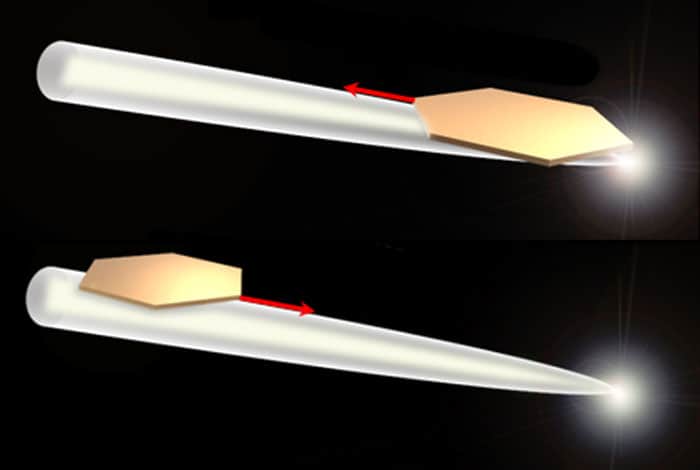Flash Physics is our daily pick of the latest need-to-know developments from the global physics community selected by Physics World‘s team of editors and reporters
Ancient meteorites reveal solar-system’s unstable past
Ancient micro-meteorites have revealed that the solar-system’s history may not be as stable as we thought. The discovery was made by researchers from Lund University, Sweden, in collaboration with the University of Chicago and University of Wisconsin-Madison in the US. The team studied 43 meteorites found on the ancient sea floor of the Lynna River near St Petersburg in Russia. These objects fell to Earth 470 million years ago and were less than 2 mm across. Unusually, the composition of these tiny meteorites did not match the make-up of modern ones. The findings instead echoed research from 2016 investigating an ancient meteorite named Österplana 065 found in a Swedish quarry. The studies mean that meteorite flow nearly 500 million years ago was completely different to todays. “We have always assumed that the solar system is stable, and have therefore expected that the same type of meteorites have fallen on Earth throughout the history of the solar system, but we have now realized that this is not the case,” says Birger Schmitz, who took part in both studies. The latest finding, reported in Nature Astronomy, means that our current understanding of our solar-system’s stable history needs to be revised.
Light pushes and pulls on a gold plate

When a beam of light strikes an object, momentum is transferred to the object, pushing it away from the source of the light. Light striking one side of an object will also heat up that end of the object, which in turn will heat the surrounding air. The hotter and faster-moving air molecules on the illuminated side will exert a greater force on the object than the cooler molecules on the opposite side – again causing the object to move away from the source of the light. Now, Min Qiu of Zhejiang University in China and colleagues have created a scenario in which these two phenomena work in opposite directions. They placed a hexagonal plate of gold (measuring 10 μm across and 30 nm thick) on an optical fibre that is tapered to a sharp tip, and van der Waals forces cause the plate to stick to the fibre. Light that leaks from the fibre causes the plate to move towards the tip. However, as the plate nears the tip, the intense light that is emitted there causes the near side of the plate to heat up. This causes the plate to reverse its direction of travel along the fibre. While the plate moved back and forth once, the researchers were unable to set it oscillating along the fibre – something that they are currently working. Describing its work in Physical Review Letters, the group says that the system could be used to transport materials in miniature lab-on-a-chip systems or even for generating mechanical energy from light.
Atomic magnetometer detects hidden machinery
A radio-frequency atomic magnetometer (RF AM) has been used by physicists in the UK to detect hidden rotating machinery. Built by Luca Marmugi and colleagues, the RF AM is based on a glass cell that is filled with rubidium atoms at room temperature. The atoms are subject to static and RF magnetic fields – which cause the Larmor precession of the atomic spins. A magnetic field from rotating machinery will disrupt this precession – and this disruption is detected by using a laser-measurement technique. The detector measures about 0.4 × 0.6 m and the team says that it is suitable for outdoor use. Using its device, the team was able to detect magnetic fields produced by spinning steel discs at frequencies of about 10 Hz as well as DC and AC electric motors. The device’s performance is on a par with a commercial magnetic flux detector and the team says that its instrument is particularly good at detecting rotational frequencies lower than about 15 Hz. Detection can be made at distances up to about 1 m, even through concrete walls. Writing in Applied Optics and in a preprint on arXiv, the team says the detector could be further improved and miniaturized and could someday be used in security and surveillance remote sensing.
- You can find all our daily Flash Physics posts in the website’s news section, as well as on Twitter and Facebook using #FlashPhysics. Tune in to physicsworld.com later today to read today’s extensive news story on an acoustic frequency comb.



